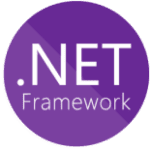Product Background
The product allows hospitals to automate the workload and distribution of studies for interpreting radiologists. To meet the SLA time frames, the app’s AI engine defines exam priorities, locates qualified doctors (based on their preferences), and assigns a specific exam to a particular expert. The software balances the workload so that all radiologists receive the correct amount of work they are committed to cover.
Challenge
The main difficulties in the previous version of the app, which became the source of customer disappointment, were poor operational performance combined with a confusing UI.
Medium to large hospitals with a significant study turnover rate reported that slow app responsiveness and overall balancing inefficiency were affecting the number of medical exams reviewed. Following some fruitless attempts with other teams to redesign the software, the client finally turned to us to help improve the overall performance right away




To improve impending faults and to preserve existing customers, we set out to:
- Find and fix the reasons linked to the app’s slow performance
- If needed – change healthcare app architecture to raise performance
- Verify the studies distribution algorithm and implement the desired business-logic elements
- Significantly decrease the capacity of the infrastructure required to use the application
- Improve app UI to make it more responsive and user-friendly
After putting out the fire, we directed the next flow to complex tasks.
- To build an integration with the majority of existing dictation systems and image viewers
- To gain a competitive edge and remain independent from existing market leaders (Philips, Agfa, etc.)
- To increase patient satisfaction and shorten the time of studies’ review and finalization
Solution
After the execution of highly detailed performance tests, our developers reviewed all API calls and database requests and challenged every query’s adequacy.
As a result, we tightened data retrieval and increased the volume of acquired data every step of the way. A large portion of data was cached in order to speed up access to repeatedly queried but rarely changing medical data.
As a result, we tightened data retrieval and increased the volume of acquired data every step of the way. A large portion of data was cached in order to speed up access to repeatedly queried but rarely changing medical data.
Afterward, we implemented the composite pattern approach to enable complicated and nested filters to be compounded, allowing for the instant extraction of data.
We also:
- Crafted UI / UX for both doctors and hospital admin requirements
- Completed integration with multiple image viewers/dictation systems
- Added a flexible and robust load balancing mechanism for real-time distribution
- Integrated the tool for different PACS archives/VNAs compatibility
- Created a mechanism for scheduling systems interoperability
- Created an internal audit mechanism to control data access (for HIPAA compliance)
- Developed a reporting tool for physician performance tracking


Results
After initial months of working around the clock, the AI engine’s performance and API back-end responsiveness has improved significantly. Presently, the initial infrastructure can efficiently support hospitals with up to 10 million studies per annum.
Furthermore, the business-logic of studies distribution was challenged and fixed throughout. Together with UI updates, these achievements lowered the overall page responsiveness to less than one second. Our collaboration has lasted for over 2 years and continues successfully as of the time of writing of this case study, making it possible to polish the product with innovative and competitive features.


Tech Stack:


FRONT-END
ReactJS


BACK-END
.Net Core


BACK-END
.Net Framework


BACK-END
RabbitMQ


BD
MS SQL
CLOUD
AWS




